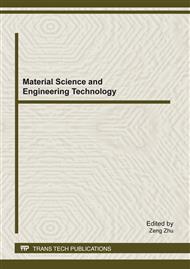[1]
Dj.M. Maric, P.F. Meier and S.K. Estreicher: Mater. Sci. Forum Vol. 83-87 (1992), p.119.
Google Scholar
[2]
M.A. Green: High Efficiency Silicon Solar Cells (Trans Tech Publications, Switzerland 1987).
Google Scholar
[3]
Y. Mishing, in: Diffusion Processes in Advanced Technological Materials, edtied by D. Gupta Noyes Publications/William Andrew Publising, Norwich, NY (2004), in press.
Google Scholar
[4]
G. Henkelman, G. Johannesson and H. Jónsson, in: Theoretical Methods in Condencsed Phase Chemistry, edited by S.D. Schwartz, volume 5 of Progress in Theoretical Chemistry and Physics, chapter, 10, Kluwer Academic Publishers (2000).
Google Scholar
[5]
R.J. Ong, J.T. Dawley and P.G. Clem: submitted to Journal of Materials Research (2003).
Google Scholar
[6]
Elidrissi M C, Roney A, Frigon C, et al. Measurements of total kinetic-energy released to the N=2 dissociation limit of H2 - evidence of the dissociation of very high vibrational Rydberg states of H2 by doubly-excited states. Chem. Phys. Lett. 1994, 224: 260-266.
DOI: 10.1016/0009-2614(94)00554-0
Google Scholar
[7]
Yiannopoulou A, Urbanski K, Lyyra A M, et al. Perturbation facilitated optical-optical double resonance spectroscopy of the 2 3Sg+, 3 3Sg+, and 4 3Sg+ Rydberg states of 7Li2. J. Chem. Phys. 1995, 102: 3024-3031.
DOI: 10.1063/1.474130
Google Scholar


